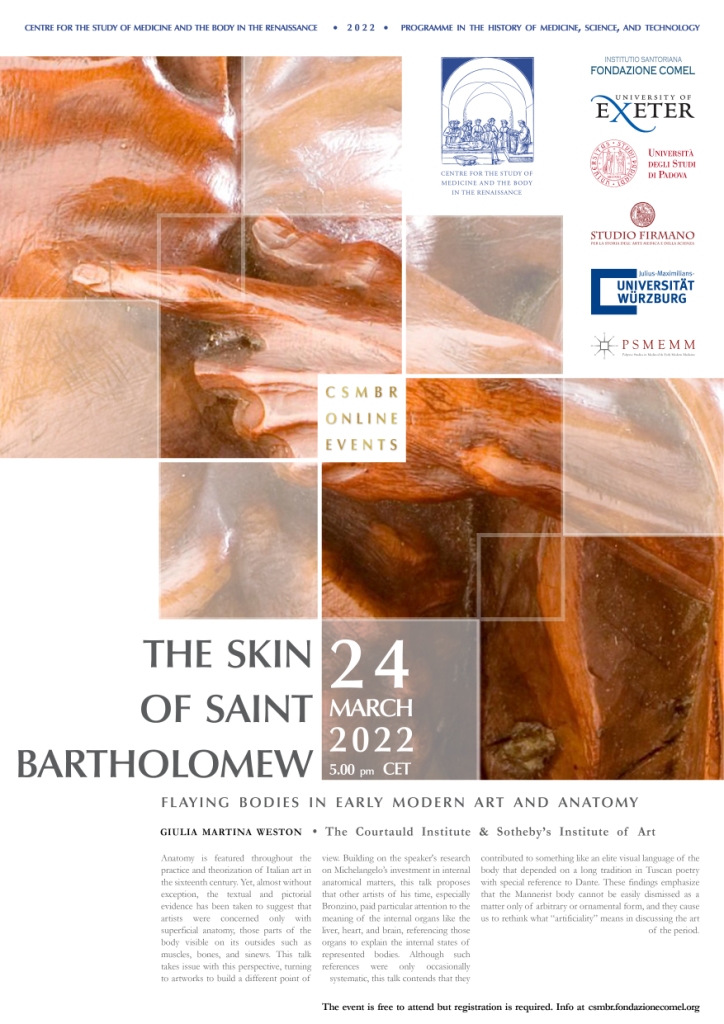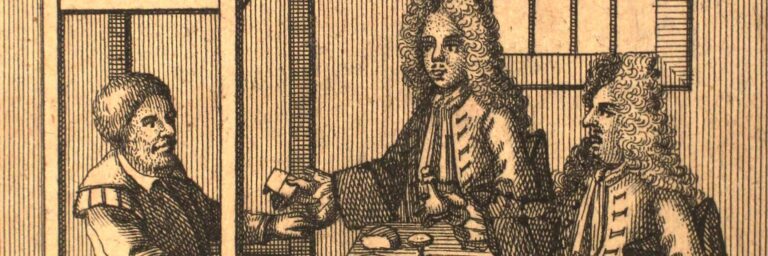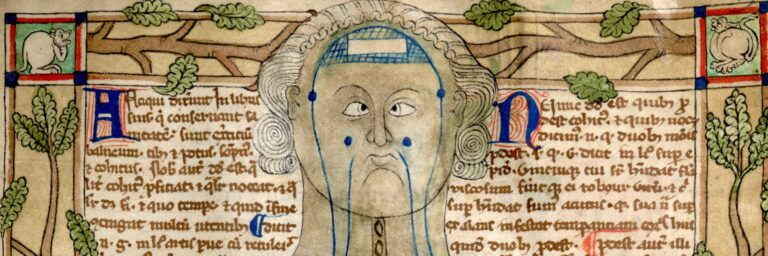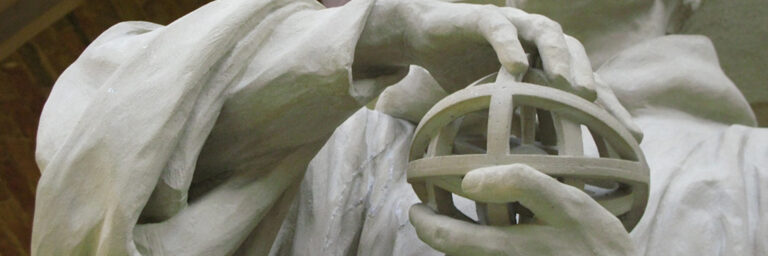The Skin of Saint Bartholomew
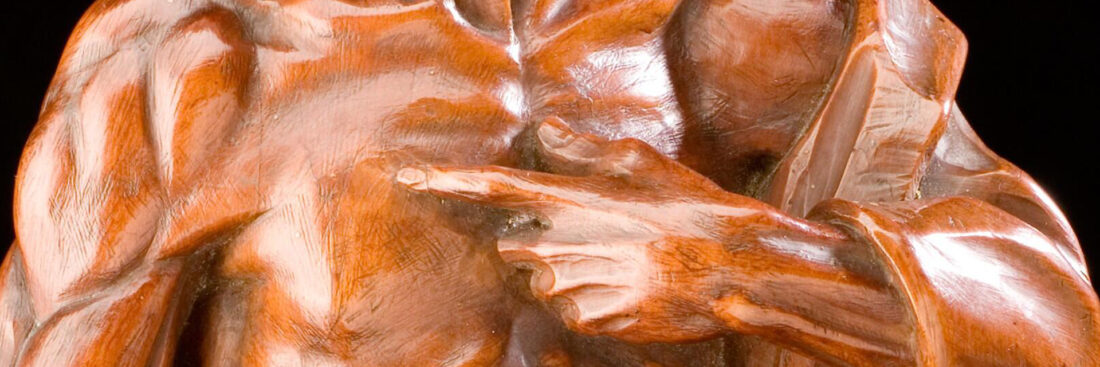

The Skin of Saint Bartholomew
Flaying Bodies in Early Modern
Art and Anatomy
Giulia Martina Weston
24 March 2022 – 5 PM (CET)
St Bartholomew was martyred by being flayed alive after bringing Christianity to Armenia in the first century CE. While the saint is traditionally represented with his skin hung across his back or over his arm, often holding a scalpel, depictions of his martyrdom focus on the process of excoriation.
This talk sets out to explore the iconography of St Bartholomew, placing special emphasis upon skin and the act of skin removal. Classical sources, particularly those recounting the myth of Apollo and Marsyas, will be read against illustrations of anatomical treatises, such as those of Andreas Vesalius’ De humani corporis fabrica (1543) and Juan Valverde de Hamusco’s Historia de la composición del cuerpo umano (1556).
On both hagiographic and iconographic ground, St Bartholomew reconciles Christian narrative with scientific enquiry and medical practice.
A first strand of this research is devoted to artists’ accuracy in the rendition of the saint’s skin, instruments of dissection, and internal anatomy, touching upon the intersections between the saint’s punishment and the écorché, an anatomical figure with the skin removed that reveals the location of the muscles.
Focusing on seventeenth-century paintings and works on paper, it will be ultimately argued that the flaying of St Bartholomew lends itself to artistic expressions which transcend the realm of mimesis. New light will be shed upon an unprecedented set of connections between this subject matter and painterly excellence and ingenuity.
New light will be shed upon an unprecedented set of connections between this subject matter and painterly excellence and ingenuity.
About the Speaker ...
Giulia Martina Weston holds a PhD from The Courtauld Institute of Art in London. She is a specialist in Renaissance and Early Modern art, a member of several editorial boards, and an independent curator and art advisor.
Her publications include the volumes A tale of two cities: Rome and Siena in the Early Modern period (2020), Niccolò Tornioli (1606-1651). Art and patronage in Baroque Rome (2016), and I Pittori del Dissenso (2014), as well as articles in peer-reviewed journals.
Giulia Martina has been Associate Lecturer in Early Modern Art at The Courtauld Institute of Art since 2016, and has lectured for The Paul Mellon Centre, London Art History Society, The University of Oxford, TEFAF online, and The National Arts Club in New York. She is a member of the Centre for the Study of Medicine and the Body in the Renaissance – Fondazione Comel (Pisa), an institution for which she is currently curating the exhibition The Universe on Paper. The Art of Linda Karshan (October 2022).



